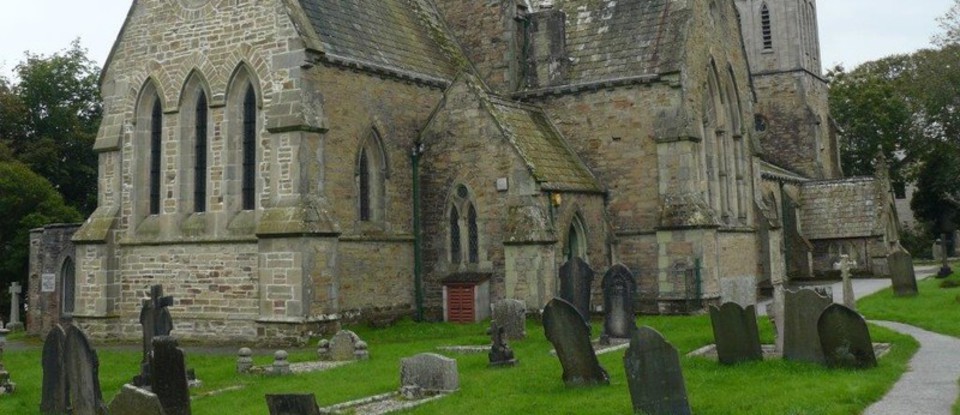
A History Charlestown Parish and St Paul's Church
Creation of the Parish of Charlestown
The development of mining and industrial activity during the first half of the nineteenth century created rapid popluation growth in the area that was to become Charestown Parish. It became home to nearly 3,000 souls by the 1840s (but in far fewer houses than today). The Diocese of Exeter (the Diocese for Truro was not created until 1877) recognised this and created two new parishes from the overlarge St Austell Parish, which hitherto has stretched from Pentewan to Bugle. The parish of Treverbyn was established to the north in china clay country in 1845 and the parish of Charlestown in the east in 1846.
Building of St Paul's Church
Initially, during the period 1846-1851, the congregation held services in a room near the present Pier House Hotel. The Lectern Bible preserved in the Church is a relic from those days. However, moves to build a Parish Church for Charlestown were soon afoot. Victorian Cornwall was a periodf of exceptional Church building, arising from new parishes being created as a result of rapid population movements. The land on which the church is built, alongside Church Road, was given by Augustus Crowder QC, Managing Director of Charlestown Estate, in 1848. The church was designed by the London Architect Christopher Eales FRIBA (1809-1903), and built by Messrs Drew and Kitt of St Austell. The foundation stone was laid by Sir Charles Graves Sawle of Penrice House on 27th November 1849.
There is an air of mystery surrounding the building of the Church. In 1897 Canon Hammond wrote in his book 'An Account of St Austell'; "the Church, which, alas, has never been wholly paid for; some say that is why it has not prospered more. It is a melancholy story, but it can do no good to repeat it here".
It appears that the building fund ran out of money in 1851, which may have had something to do with a serious downturn in the properity of the local mines, including the closure of Charlestown United Mine in 1849. By early 1851, when services commenced, the Church must have been a barely completed shell, with the planned spire missing; a situation which would remain for 120 years. The Church was consecrated by the Bishop of Exeter, Henry Philpotts, on 30th May 1851.
The collapse of mining in this area, between 1850 and 1870 caused many people to leave the area. The Parish became a quiet backwater, which is reflected in the fact that so few improvements in the church were made until well into the 20th century.
Recent Developments
Housing developments at Carlyon Bay, Duporth, Holmbush and Sandy Bottom, through the decades after 1960, together with industrial developments at Holmbush, brought much needed vitality to the Parish and the population soared to levels not seen since the mid 1800s. In 1993, in response to rapid population growth in the Boscoppa and Phernyssick areas, a further new Parish, St Lukes, was created from the northern part of the original Charlestown Parish. Since the 1930s, with an active congregation at St Paul's, many additions have been made to the Church, using funds raised by clergy, parishioners and well-wishers to create the charming buildings we see today.
Adobe Acrobat document [70.6 KB]
